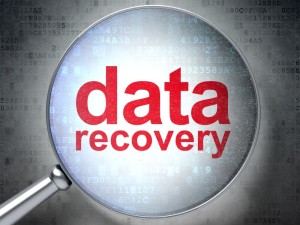Recently, multiple sudden natural disasters have left millions of people stranded on roadways, stranded at work, or left in their homes and unable to leave, and without electricity, All of these sudden floods, thunderstorms, hurricanes, etc. should all serve as a reminder that we have to be ready at all times just in case a disaster does strike. Today’s weather is completely unpredictable, and with the winter season approaching, there are sure to be more unpredictable weather on the way.
Regardless of where your business is located, it is always important to have a full Backup Disaster Recovery(BDR) plan in place. If you have an effective BDR in place, you will be able to effectively respond to any type of disaster that takes place. Whether you currently have a Backup Disaster Recovery(BDR) plan in place or not, we encourage you to ask yourself these questions:
What would your business do if you ever lost access to data?
How long do you think it would take for your business to recover from a major loss?
If you no longer had access to your server, would your business be able to survive?
How much do you think it would cost to recover from the loss?
Many businesses do have a backup solution ready just in case a disaster happens, but not every business will be able to recover quickly when something does happen. If your business loses data or if there is a power outage, it can be difficult for some businesses to restart their operations quickly. For some businesses, the entire operations can be shut down if there is no access to the server for less than two days.
When creating a Backup Disaster Recovery plan, it is very important that you start by making preparations for the worst possible thing that can happen. When you start by preparing for the absolute worse, you should have an easier time resolving the issue when something minor occurs.
Are you making plans to have a telecommuting plan in place just in case your employees will need to access business data from a different location? When your employees who have access to the data can obtain the information when needed, this will keep your business from losing revenue. Your employees will be able to access vital business information from their new location until they can gain access to the workplace again.
When your employees are able to use file sync services and cloud services, all employees will be able to do their jobs despite the disaster that took place. The use of these services and technologies can be the difference between losing revenue and bringing in revenue. When employees are equipped with the services they need while they are working from home or another location, they will be motivated and prepared to get their work done every day, regardless of where they are working from.
A BDR plan can save your business from completely losing everything and closing its doors for good. When you back up your data in off-site locations and other locations, you will have your business operating again in little time. You may also be able to run your business from another location.
Do you think it is time to rethink and reevaluate your current BDR plans? Are you ready to develop a Backup Disaster Recovery plan that will allow your business to continue operating despite what type of natural disaster or accident takes place? For more information on backup and disaster recovery plans, please do not hesitate to contact us today for more information. Our team is here to help your business plan for any unforeseen events.
Tag Archives: data recovery plan
Archives are Great, Backups are Better (Part 2)
Welcome back to the second half of this two-part article about why it’s time to upgrade your archiving system to cloud backups. Last time we talked about why businesses archive and the unfortunate weaknesses of an archived situation. Join us today as we discuss whether or not your company needs backups and what those backups can do for you once your backups are saving regularly to the cloud.
Should You Be Using Backups?
Yes! Everyone with files and computer configurations they don’t want to lose should be creating backups. This is easy to say but more complicated to explain. Backups can come in one of several forms. A backup of your archives, for instance, would take the compressed archives, copy them, then store them on a separate, secure server. The separation needs to be completely outside your original network and ideally on a third party cloud system. If you are backing up a server that is already on the cloud, make sure that the backups are on a separate cloud server that is dedicated to holding backups. This way, nothing you do that could damage or risk the work server could put the backups at risk. Then, just in case all your old files and archives corrupt, you can reload them from the backup with only a few minutes of delay.
However, individual file backups aren’t the only kind and, in fact, aren’t even the most common. The best way to backup is to take a ‘snapshot’ of your entire computer’s configuration and save that into your backup server space. This way, no matter what happens to your computer, you will be able to recover absolutely everything about your workspace, right down to the way icons are arranged on your desktop.
What Backups Prepare For
The full-system backup system keeps you prepared for a large variety of disasters from hurricanes to hackers as long as you know how to run a recovery. The events a strong backup plan can recover from include
- File Corruption
- If for some reason the files on your computer corrupt, you can simply recover them from backup rather than spending days on the dubious process of ‘un-corrupting’ them
- Ransomware
- Should you find yourself ‘getting ransomed’, you can simply wipe the entire computer and restore from backup to be back to work in an hour or two rather than paying the ransom or risking file loss.
- Computer Destruction
- Whether your facility floods, suffers an earthquake, or your toddler spills their entire sippy cup over your system, a full-computer backup can help you quickly set up on a new computer and/or network of computers with minimum delays
- Miscellaneous Malware
- If your computer somehow gets infected with malware or a fleet of malware (as they often run in packs), it can take days to try eradicating the infection. However, with complete backups, you can simply wipe the computer and reinstall.
- Data Recovery
- Usually, a company will only archive information they expect to need later. However, some rare instances require data you didn’t expect to need like old chat logs. A full computer backup will have a copy of these ready and waiting while archiving will not.
Backups are an important part of any modern business because they ensure that no matter what happens, you can get your system back up and running and ready to serve your customers in the shortest possible amount of time. To know what backup solution is right for your business and how to get started, please contact us today! Our data recovery experts would be happy to give you advice and help you set up a complete backup solution.
Backup Disaster Recovery: The Biggest Risks Today as Incentive to Prepare

Backup disaster recovery–no matter what the cause–can be devastating for your business without proper preparation.
Backup disaster recovery is more necessary than ever as cyber threats become more prevalent and insidious. This doesn’t mean it’s strictly limited to natural disasters since human beings can cause just as many problems. Nevertheless, the combined threats permeating cyberspace are at red alert level now.
For your business, not having some form of backup in today’s times becomes the worst type of risk. Entrepreneur recently reminded that 40 to 60 percent of all small businesses don’t survive disasters. All of this comes from lack of evaluation on what makes a business vulnerable.
It’s easy to get complacent if nothing ever happened to your business in the past. What didn’t happen maybe five or ten years ago could easily happen now, especially newer threats you’re not aware exist.
So what are some common threats that could threaten your business data? With proper backup tools, none of these have to make you worry.
The Current Threat of Ransomware
This could soon become the worst cyber threat in the world. We’ve written about it before in our blogs, but we’ve seen an increase in ransomware since the first of the year. It’s been cited recently as one of the worst-case-scenarios in business disasters.
What makes this threat so bad is it’s so easy to catch if your employees inadvertently click a link in an email. Those behind ransomware frequently create convincing emails that appear to come from government agencies or superiors in a company.
Once the ransomware gets into your system, a hacker can shut down your entire network and demand a ransom to get your files back.
While some companies get their data returned after paying a ransom, not all do. It’s better to create reliable backup systems to prepare for this growing problem. With proper IT management, you can succeed, especially through the cloud.
Natural Disasters
Just about anything can happen in the way of natural disasters, and it goes far beyond hurricanes or earthquakes. Now freak winter storms or even floods can happen in places you wouldn’t expect. Your own business location may have typically calm weather, then suddenly experience something on a biblical level.
These events could wipe out your business in an instant. Having an on-site server could mean your entire business data disappearing forever. Even some other forms of backup may not have complete reliability, especially using something outdated like tapes.
Once again, with more reliable backup services from quality IT management, you can retrieve your files the same day without having to wait for hours. Through the cloud, you can access everything anywhere you find an Internet connection.
Human Error or Deliberate Disasters
While nature can always wreak havoc on a business, so can human beings. Sometimes a disaster may occur strictly because an employee accidentally deletes important data. Despite all the technological advances out there, it’s still far too easy to press one button wrong that eliminates entire databases.
Other times, employees can do things out of spite due to dissatisfaction in their jobs. When this happens, it can bring even more damage and cost you a fortune in downtime.
Small businesses experiencing downtime could have costs up to $427 per minute, so it’s time to prepare for any occurrence. Because you may have employees numbering in the hundreds, it only takes one of them to create a major problem accidentally or intentionally.
Through superior BDR systems, this kind of disaster won’t leave you hanging. What’s important is finding an IT provider that’s reliable and affordable.
Let us provide the reliable backup disaster recovery system you need here at SystemsNet.
Contact us to find out more about our comprehensive IT services.
What to Include in Your Backup Disaster Recovery Plan

Having a backup disaster recovery plan in place can ensure that you and your team know how to act if a major data loss occurs.
So you understand the importance of having a backup disaster recovery plan, and you’ve probably put a lot of thought and work into figuring out what you would do in any number of worst-case scenarios, but you may have missed one very important step. Until you’ve written it down, your plan isn’t finished. A plan that has been written down and shared will gain much more respect and understanding than one that hasn’t. Both of those things are necessary for the plan to actually work. It really should be more than just a few notes scribbled on a couple of pages though. Write it more like a policy. Compare it to your privacy policy, or something similar, for professionalism. Once you have it all written out, make sure you’ve actually included absolutely everything. Here are a few details to make sure you’ve included in your plan.
A chain of command
When everything is falling apart, especially if the situation doesn’t perfectly fit a situation described in the plan, everyone will be scrambling to figure out who is in charge. It’s very important that this is decided before a disaster occurs. Knowing who will be in charge of who, and who will be allowed to make which decisions will prevent mistakes later. It will also save a lot of valuable time in the case of an emergency.
A timeline
Make your plan much more specific by noting the amount of time that each step should take. First, this will keep everything aligned. One department won’t be confused by another department being two steps behind. Second, it will keep the entire office working quickly. It’s easy to slow down when you’re tired, and by halfway through a disaster situation, your employees will be exhausted. However, hours and minutes are crucial in this process. Make sure you can keep your employees moving as quickly as possible to get everything back on track.
Names
You can clear up a lot of confusion ahead of time by specifying who is supposed to do what. It’s really easy to just note that something should be done, but if no name is next to the task, it’s likely to never happen. At least mention which department is supposed to accomplish a task, and if possible, give the responsibility to a specific position. It’s even better if you can put an employee’s actual name next to a task. This will cause that employee to feel ownership over the task, and there’s no better way to encourage an employee to do a great job.
Plans for education
No matter how perfect your plan is, it is guaranteed to fall apart if no one knows what is supposed to happen. Make sure that your entire staff knows exactly what to do in the case of a disaster. Some companies might do this through a series of classes. Others might simply cover a different aspect of the plan for an hour in a weekly meeting. You know how your employees think, and you know how they learn best. Use these methods to make sure that they know the backup disaster recovery plan as well as you do. And then put that in the plan as well. This will help to encourage it to continue to happen just as it should. Remember, educating your employees is by far the most important part of your disaster recovery plan.
Still interested in learning more about writing a backup disaster recovery plan? We’re experts in the industry, and we can help you with that, or anything else that you need. Contact us. We’re here to help.

